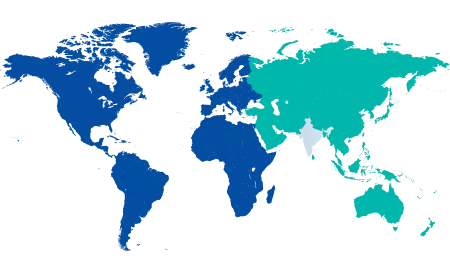-
Centre of
Excellence
Centre of Excellence
Other Specialities
- Allergy and Immunology
- Andrology
- Anesthesiology
- Dental Medicine
- Dermatology
- Diabetes and Endocrinology
- Ear Nose Throat
- Electrophysiology
- Fetal Medicine
- General Medicine
- General Surgery
- Geriatric Medicine
- GI Surgery
- Growth and Hormone
- Gynaec Oncology
- Hand Surgery
- Hemato Oncology
- Hematology
- Hepatobiliary Surgery
- ICU and Critical Care
- Infectious Disease
- Internal Medicine
- Interventional Radiology
- Kidney Transplant
- Lifestyle Clinic
- Medical Gastro
- Medical Oncology
- Microbiology
- Minimal Access Surgery
- Neonatology & NICU
- Nuclear Medicine
- Nutrition And Dietetics
- Ophthalmology
- Oral Maxillo Facial Surgery
- Paediatric Urology
- Pain Medicine
- Parkinson Disease and Movement Disorder
- Pathology
- Pharmacy
- Physiotherapy
- Plastic And Cosmetic Surgery
- Psychiatry
- Pulmonology (Respiratory and Sleep Medicine)
- Radiology
- Radiotherapy (Oncology Radiation)
- Renal Sciences
- Surgical Gastro
- Surgical Oncology
- Transfusion Medicine
- Vascular and Endovascular Surgery
Speciality Clinics
- Doctors
- Dhakuria
- International Patients



Clinics








- Self Registration
- Mars - Ambulance
- Corporate & PSU
- Insurance Helpdesk
- Awards And Achievements
- Careers
- Contact Us

Colonoscopic Polypectomy
Colonoscopic Polypectomy in Dhakuria, West Bengal
Colonoscopic Polypectomy is an important technique for removing polyps that can be non-cancerous, cancerous, or pre-malignant. As the procedure is relatively non-invasive, it can be performed during a colonoscopy test by employing endoscopic tools that cut and cauterise the polyp depending on its size, shape, and location.
As polyps in the colon have a high potential to turn cancerous, the Colonoscopy is used to detect the presence of polyps; if confirmed, the polyps are removed and taken for further examination. Therefore, it helps prevent the development of colon cancer. Colonoscopy Polyp Treatment in Dhakuria causes minimal discomfort and has a good prognosis, with patients recovering quickly.
FAQ's
There are several different kinds of colon polyps.
-
Adenomatous polyps, or adenomas, can be further classified as tubular, villous, and tubulovillous adenomas.
-
Serrated polyps include hyperplastic, sessile serrated lesions, and conventional serrated adenomas.
-
There are also non-neoplastic polyps, such as juvenile, inflammatory, and hyperplastic pseudopolyps.
-
Medical professionals categorise them according to whether or not they have the potential to become cancerous.
Colon polyps are common, especially as people age; the overall incidence of colon polyps in India is about 5.1% and 12.7%. About 80% of these polyps are of the adenomatous type. People of any gender or ethnicity can develop colon polyps, which can lead to colon cancer. To reduce the risks associated with colon polyps and prevent potential problems like cancer, early detection and routine screenings are essential.
A colonoscope is a long, flexible tube that is inserted through the rectum into the large intestine, allowing a clear visualisation of the colon lining. If a polyp is seen during the examination, an instrument is passed through the colonoscope to take a biopsy sample for examination.
During the Colonoscopy examination, if the polyp is found and is indicated for removal, a wire loop will be passed through the colonoscope to sever the polyp attachment to the intestinal wall. Even the smallest polyps may be cut and cauterised to prevent future growth. You will feel no pain during the polyp removal.
Colonoscopy Polypectomy is a minimally invasive and routine procedure used to diagnose and assess whether an abnormal growth in the colon is cancerous. Patients tend to recover quickly after the procedure, with minimal trauma or complications.
For the best possible examination, your colon must be free of any waste materials. You will have to stop taking solids once the bowel has been prepared. Your doctor may advise specific liquids you can take only up to three hours before the procedure. Inform your doctor beforehand of any drug allergies or medications you are taking.
To estimate your risk of colorectal cancer, medical professionals look at the quantity, size, location, and kind of colon polyps. Since polyps grow slowly, fewer and smaller polyps generally suggest a lower risk.
The presence of more than three polyps, polyps larger than 10 mm, those on the right side of your colon, and particular types such as villous or tubulovillous adenomas, sessile serrated lesions, or serrated adenomas, as well as hereditary polyposis syndrome, may increase your risk of colon cancer.
During colonoscopies, colon polyps—aside from non-neoplastic types—are usually removed by Polypectomy. It can take up to two weeks for a pathological examination to separate neoplastic from non-neoplastic polyps. Although the risk of colorectal cancer is reduced by 80% when neoplastic polyps are removed, recurrence is common.
Following a colonoscopy, the length of time between surveillance visits varies according to results; examinations are planned every one to seven years, depending on personal risk factors and prior polyp history.
You will be kept in a recovery room until the effects of the medications wear off. Due to the air that was introduced during the examination, some patients experience bloating for a few minutes following the treatment. It is very common after the procedure, and you will get relief after passing gas. If the polyp has been removed, you may have some dietary restrictions for a while.
A colonoscopy is a great tool for preventing colon cancer through polyp removal. It allows the polyps to be removed easily and safely without requiring surgery. Also, the Colonoscopy can be performed periodically for follow-up of patients with previous polyps, colon cancer, inflammatory bowel disease, or a family history of cancer. The procedure is well tolerated by patients and has minimal risks.
Colonoscopy and Polypectomy procedures are generally safe and carry minimal risk. However, as with any procedure, Colonoscopy Polypectomy causes some complications, which are:
-
Bleeding may arise from the biopsy site or polyp removal site
-
Rarely, perforation of the bowel may occur
Home Dhakuria Specialities Medical-gastro Colonoscopic-polypectomy



You’re on Our Indian Website
Visit the Global site for International patient services











